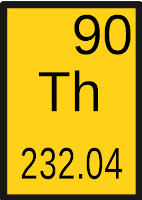PSLV-C20

India's Polar Satellite Launch Vehicle in its 23rd
flight (PSLV-C20), launches the Indo-French satellite SARAL along with 6
commercial payloads from Canada, Austria, Denmark and UK into a 785 km polar
sun synchronous orbit inclined at an angle of 98.538 degree to the equator.
PSLV-C20 was launched on Feb 25, 2013 from Satish Dhawan Space Centre (SDSC
SHAR), Sriharikota.
With
a lift-off mass of 407 kg, SARAL is the 56th satellite to be launched by
PSLV. The six payloads from abroad together have a lift-off mass of 259.5 kg.
PSLV-C20 is the ninth flight of PSLV in 'Core-Alone' configuration (without
solid strap-on motors).
PSLV
Workhorse Launch Vehicle of ISRO
PSLV
is the first operational launch vehicle of ISRO. PSLV is capable of launching
1600 kg satellites in 620 km sun-synchronous polar orbit and 1050 kg satellite
in geo-synchronous transfer orbit. In the standard configuration, it measures
44.4 m tall, with a lift off weight of 295 tonnes. PSLV has four stages using
solid and liquid propulsion systems alternately. The first stage is one of the
largest solid propellant boosters in the world and carries 139 tonnes of propellant.
The
reliability rate of PSLV has been superb. There had been 22 continuously
successful flights of PSLV, till February 2013. With its variant
configurations, PSLV has proved its multi-payload, multi-mission capability in
a single launch and its geosynchronous launch capability.
SARAL
The Satellite
with ARGOS and ALTIKA (SARAL) is a joint Indo-French satellite
mission for oceanographic studies. SARAL will perform altimetric measurements
designed to study ocean circulation and sea surface elevation. The payloads of
SARAL are:
- Ka band Altimeter, ALTIKA - built by the French National Space Agency CNES. The payload is intended for oceanographic applications.
- ARGOS Data Collection System - built by CNES. It will collect a variety of data from ocean buoys to transmit it to the ARGOS Ground Segment for subsequent processing and distribution.
- Solid State C-band Transponder (SCBT) is from ISRO and intended for ground RADAR calibration.
Application
of SARAL
SARAL data products will be useful for
operational as well as research user communities in many fields like:
- Marine meteorology and sea state forecasting
- Operational oceanography
- Seasonal forecasting
- Climate monitoring
- Ocean, earth system and climate research
- Continental ice studies
- Protection of biodiversity
- Management and protection of marine ecosystem
- Environmental monitoring
- Improvement of maritime security
Besides SARAL, PSLV-C20 launched six auxiliary
payloads from Canada, Austria, Denmark and UK from Sriharikota on Feb 25, 2013.
Name
|
Weight
|
Country
|
SAPPHIRE
|
148 kg
|
Canada
|
NEOSSAT
|
74 kg
|
Canada
|
NLS 8.1 (UNIBRITE)
|
14 kg
|
Austria
|
NLS 8.2 (BRITE)
|
14 kg
|
Austria
|
NLS 8.3 (AAUSAT-3)
|
3 kg
|
Denmark
|
STRaND-1
|
6.5 kg
|
UK
|






